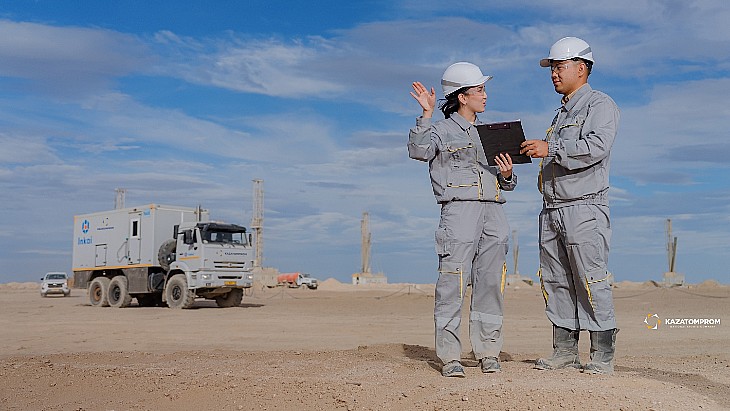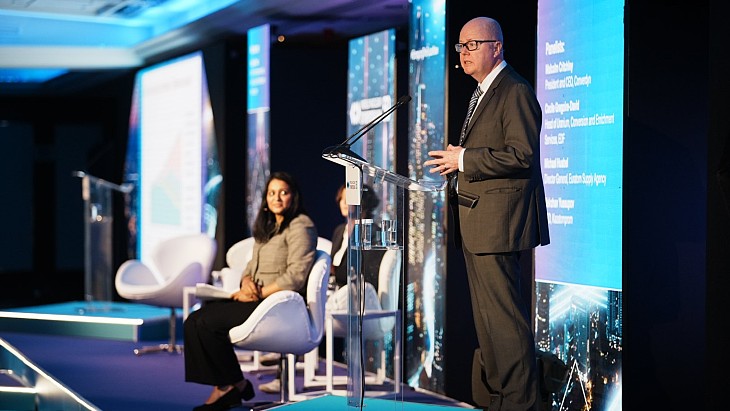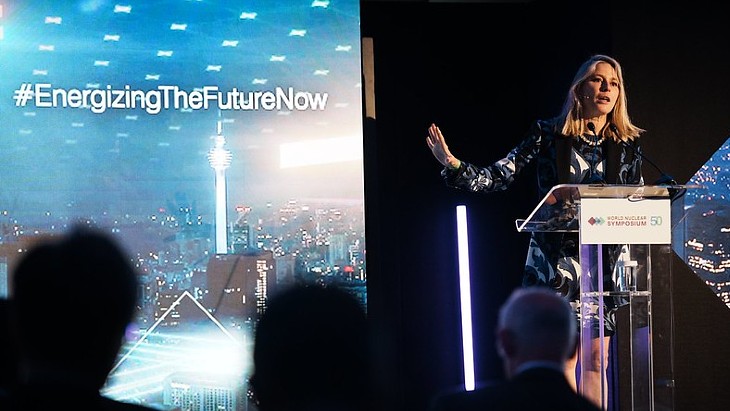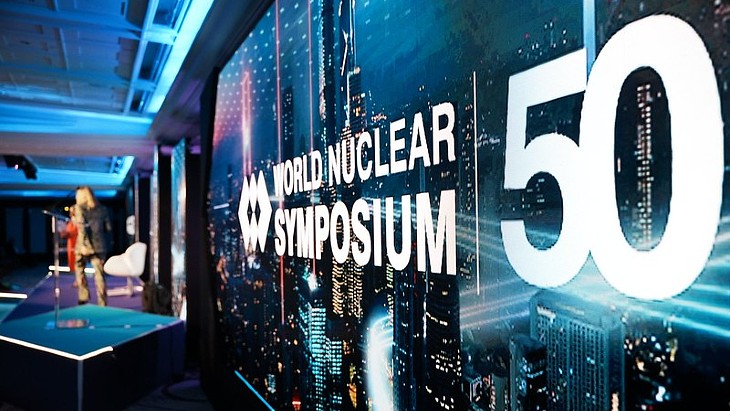An inauguration ceremony for the seventh cascade was held yesterday and attended by representatives of the federal government, the Brazilian Navy and the nuclear energy sector.
INB said the new cascade gives it the capacity to produce about 50% of the annual fuel reload requirements of unit 1 at the Angra nuclear power plant.
The new cascade is part of the first phase of a joint project with the Brazilian Navy aimed at installing ten cascades of centrifuges, eventually enabling INB to meet about 70% of enriched uranium demand needed to refuel Angra 1. The second phase of the project envisages a further 30 cascades being installed, giving INB the production capacity to fully meet the refuelling needs of Angra units 1, 2 and 3.
"The operation of the 7th cascade is a milestone for the national nuclear sector," said INB President Reinaldo Gonzaga. "It represents yet another step towards self-sufficiency in the production of nuclear fuel for nuclear power generation. Moreover, we are increasingly consolidating ourselves as a technological reference in the nuclear sector on a global scale."
Minister of Science, Technology, Innovation and Communications Gilberto Kassab said: "With this inauguration, Brazil shows its capacity and moves towards independence in the field of nuclear energy. It's important to highlight how important it is to invest in science and technology to see projects like these being developed."
According to INB, BRL560 million (USD135 million) has already been invested in the project and a total of BRL3 billion is expected to be invested in it by 2033.
Uranium used to fuel Brazil's nuclear power reactors has previously been sent as uranium concentrate to Cameco in Canada to be converted into uranium hexafluoride (UF6) gas, which was then sent to Urenco's enrichment plants in Europe. After enrichment, the gas was returned to Brazil for INB to reconvert the UF6 gas to powder, which is then used to produce nuclear fuel pellets.
Stage 1 of the Resende plant - eventually to be four modules totalling 115,000 SWU per year - was officially opened in 2006. Each module consists of four or five cascades of 5000-6000 SWU per year. Early in 2009, it was announced that INB would begin full operation of the Resende plant in May 2009. The full stage 1 plant was expected to produce 60% of the fuel needs of Angra units 1 and 2 by 2012. Stage 2 will take capacity to 200,000 SWU. The centrifuges are domestically developed and very similar to Urenco technology.
INB's fuel fabrication plant, designed by Siemens, is also at Resende, with capacity of 160 tonnes per year pellet production and 280 tonnes per year fuel assembly production.
Brazil has two nuclear reactors, Angra 1 and 2, which generate about 3% of its electricity, and a third under construction.

.jpg)



_57190.jpg)

_49098.jpg)





